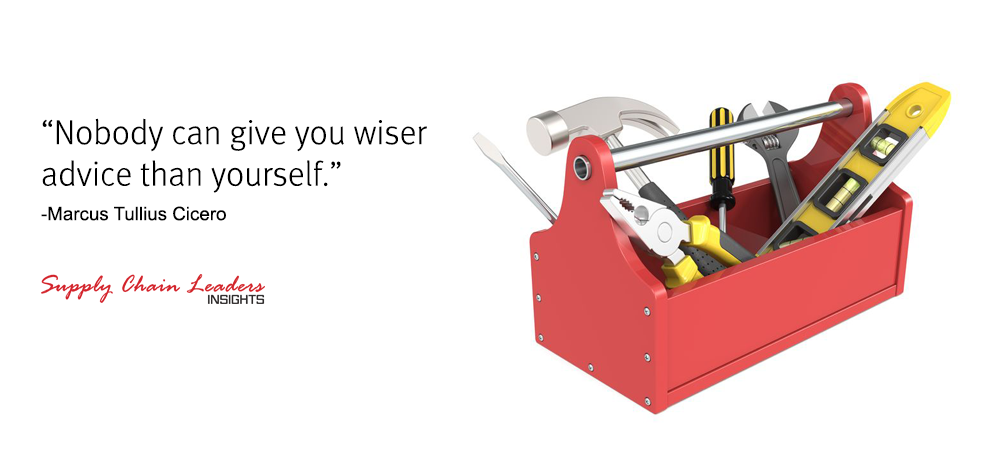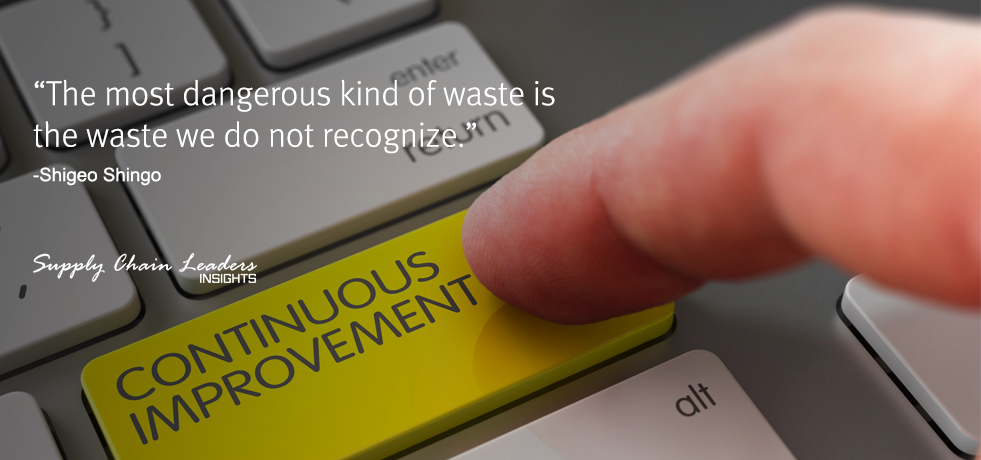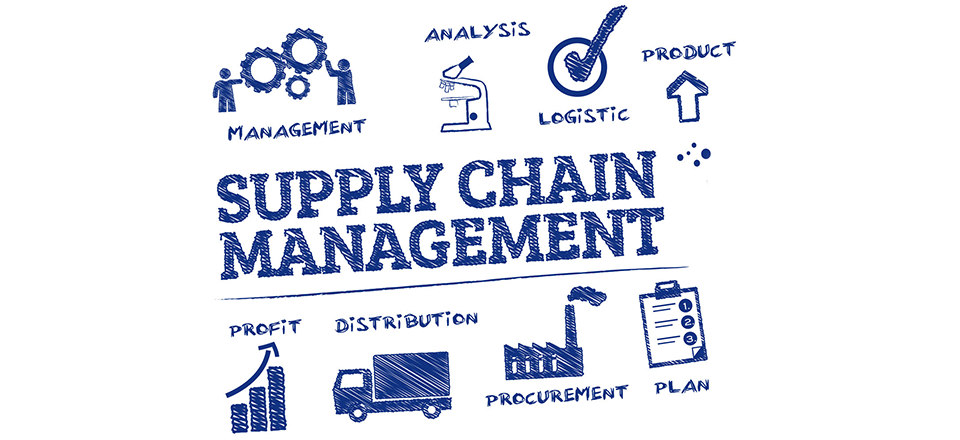If you’re a leader in a supply chain organisation or company logistics division, doesn’t it always seem that improvement requires help from external parties? Whether it’s a consulting firm, IT vendor, 3rd party service provider or some other source of support, there’s no shortage of helpful advice available, most of which quickly turns into recommendations to avail of somebody’s services.

So in this blog post, I thought I’d dare to be different, and offer some tips for your supply chain which will lead to improvements, and which you can implement without hiring external help.
Of course if you follow these tips, there may come a point at which you need to call on extra help from specialists, but only once you’ve perfected the fundamentals, which by drawing on the expertise within your enterprise is something you should realistically be able to do. The following five sections are really more than just tips, as each has a number of ideas for supply chain improvements that you should be able to work on in your company.
Do These 5 Things to Improve Your Supply Chain Without External Help
1. Work on Waste Elimination
Wherever there is a continuous improvement model, there is a long line of supply chain consultants and specialists waiting to tell you not to try implementing them at home.

My advice is to ignore them in the early stages at least, with the exception perhaps of Six Sigma, which is a particularly complex doctrine and requires similarly complex training, although of course the rewards can make the effort and investment well worthwhile.
Other methodologies, such as lean, are not so difficult, making it relatively easy to familiarise colleagues and other employees with the key principles.
Furthermore, the great thing about these continuous improvement practices is that you can select specific elements to implement in your supply chain. The lean principle of waste elimination is a perfect example. By applying the following 7-step process, you can start to make your supply chain a little leaner and hence, a little more efficient, and a little less costly: 1) Know the seven supply chain wastes. 2) Put a “lean team” together 3) Select a supply chain area to focus on. 4) Map the processes in your selected area 5) Start looking for waste within that area 6) Make changes to remove the waste your team identifies 7) Move on to a different area, rinse and repeat. You may already be familiar with the seven wastes, but if not, they are as follows:
- Transport: Moving material from one place to another is a waste of resources (unless your customers are paying specifically for that material movement).
- Inventory: Raw materials, work in progress, and finished goods. If you have more of these materials than you really need to meet customer orders, you have waste in your supply chain.
- Motion: Motion is a waste. For example, if your warehouse operatives have to pick items up from the floor, when a change in process or layout could enable them to pick those same items at waist-height, you have wasted motion in your warehouse.
- Waiting: Just like transport, your customers probably receive no benefit from waiting time in any area of your supply chain.
- Overproduction: This generally applies to manufacturing, but even if your company does not make products, your suppliers probably do. Overproduction upstream in your supply chain can impact your service levels and perhaps lead to excess inventory.
- Over-processing: Steps in any process which do not add value for your customers are wasteful and where possible, should be removed.
- Defects: Errors in processing, defective materials, product quality issues: All defects create extra work and result in lost sales.
These are the seven wastes that you and your lean team should understand and seek to eliminate. Unless your company has been practicing lean for some time, waste will inevitably exist in your supply chain and with a little diligence, will not be difficult to reveal. This is probably one of the easier DIY tips to apply to your supply chain without the help of external agencies. Your efforts will be most effective if you start off by concentrating on individual processes, work streams or functional areas. If the scope of your project is too wide, efforts to remove waste can overstretch your resources, leading to a demotivated lean-team and lukewarm results.
2. Health and Safety Improvements
The need to focus on health and safety applies in every commercial organisation, but some environments carry more risk than others. Supply chain health and safety risks are inherent in manufacturing, warehousing, and transport activity, so there is little excuse not to try and create the safest environment possible for employees.

Despite the risks, health and safety is often neglected because of the resources required to make improvements. When there are customers to satisfy and costs to reduce, companies tend to give higher priority to these objectives. However, health and safety measures contribute greatly toward supply chain effectiveness, customer service, and cost-efficiency. You can improve your supply chain with a focus on health and safety, and what’s more, you can do so without external help. You just need to apply some resources, commitment, common sense and above all, to be observant. Every incident or accident that you prevent in your supply chain is a cost saving, no matter how minor. Here are some of the ways in which poor health and safety management impacts the cost, quality, service, and overall performance of your enterprise:
- Accidents cause injury. Injury results in employee absence from work. Absent employees usually need to be replaced, perhaps by less skilled substitute workers and certainly at a cost.
- Injured employees may make insurance claims or even take legal action against your company. Costs are incurred in defending claims and insurance premiums can increase.
- Accidents can injure your company’s reputation, as well as causing physical harm to your employees.
- Incidents can cause damage to your supply chain assets, incurring delays, disruptions, and costs for repair or replacement.
- Incidents can also damage inventory, which then has to be written off.
- Sickness (resulting from health issues in your workplace) has effects similar to those of accidents.
Interestingly enough, hazards with the potential to cause incidents and accidents, can often be a source of waste too.
Therefore it makes sense to integrate health and safety inspections and improvement initiatives into your efforts to eliminate waste. By removing waste, you can create a safer working environment, and vice versa.
3. Improve Inventory Management
As already discussed, excess inventory is a waste, but there is so much more to effective inventory management and its relationship with supply chain cost in particular. That’s why no list of supply chain DIY tips would be complete without mentioning inventory management.
You don’t need to enlist external help to make improvements to inventory management, although it can be useful to do so regarding more complex elements such as forecasting, demand planning, and sales and operations planning. You should have no problem working on some of the more fundamental aspects though, for example:
- Improving inventory counting cycles and accuracy
- Cutting your losses early when inventory becomes obsolete
- Keeping similar products apart (don’t store them in adjacent bins)
- Integrating scanning technology into your warehouse management system
- Implementing robust security measures to prevent inventory shrinkage
- Reducing cycle times (shorter lead times—less need for buffer inventory)
- Ensuring warehouse employees are thoroughly trained in inventory policies, processes, and practices
The above measures should not be difficult to put into place and of course, you may already have implemented some of them. For example, if your company is currently performing annual inventory counts, switching to a program of cycle-counting will almost certainly improve inventory accuracy. As a natural part of the cycle-counting process, your warehouse staff will also be able to keep a better eye on stock which is not moving, enabling you to cut losses early by selling at a discount or otherwise disposing of the stock.
Obsolete stock is bad news at the best of times, but even more so if it continues to incur carrying costs and take up valuable warehouse space.
If you already have a warehouse management system in place, investing in a traceability solution using barcode scanning shouldn’t be too difficult. This will eliminate the need for manual data entry and hence reduce input errors. At the same time, you will gain better visibility of goods as they move through your supply chain.
4. Find Out What Your Customers Really Want
Understanding your supply chain cost-to-serve can really help you identify ways to improve profitability, but unless you have people with the knowledge and experience to conduct a full cost-to-serve analysis, this might be something to seek external help with. However, awareness of customer needs and expectations is a vital part of cost-to-serve evaluation and is something which anyway, your company should possess. Many companies think they know what their customers want, but don’t actually take steps to validate assumptions.

During our clients’ cost-to-serve projects, it’s not at all unusual to find a disparity between what the company believes its customers want, and the true facts of the matter.
Unless you regularly take a pulse on customer expectations, it’s so easy to become out of step with them, which can result in under and over-servicing of customers. By taking the time to keep track of customer perceptions and adjusting distribution processes accordingly, you can actually reduce your supply chain costs and improve service performance at the same time. You don’t need the services of a consulting company or market research organisation to perform a check-up of your service levels.
Thanks to Internet technology, there are a number of ways to gather customer feedback about supply chain service. Applications exist which allow you to quickly and easily set up and distribute customer surveys, for example. The beauty of these tools is that they also make it easy for customers to respond, maximising the quantity of feedback received. Some of the data you receive should be actionable without need of further analysis.
For instance, you might ask your customers about their preferences regarding delivery frequency. If the majority of customers express the wish for more or less frequent deliveries, you can change your service to suit, or even tailor delivery frequency to groups of customers depending on their preferences. You might also gauge your customers‘ attitudes toward the possibility of chargeable increases in service, or discounts for a more basic service. The key point is this: whatever action you take will be based on facts about customer needs, so you can manage service proactively and increase profitability.
5. Deliver the Right Staff Training and Education
Before you get to work implementing any of the DIY tips from previous sections of this post, it might be best to review your training and education program, just to make sure you’re equipping your management team and workforce to help you fine-tune your supply chain.

Without the help of external educators and training consultants, many companies put together training and education plans which are rudimentary at best. This can be good news for your business though, since you might achieve a competitive advantage by stepping education up a notch or two.
Enlist the help of your human resources team and build a program focused on lean thinking, health and safety culture, customer service and inventory management. Sure, you might need to send a few key team members on external courses, but do so with the intention of bringing them back to share what they learned. Have them work with HR on their return, to develop some internal (preferably cross-functional) workshops focused on the improvements you want to see.
Alternatively, you can invest in some online training tools and have your new subject matter experts build courses tailored to the way your supply chain works.
Of course the need for good communication goes hand-in-hand with that for good training. Your senior leaders must deliver clear messages about changes you plan to implement, and should demonstrate their commitment to your supply chain improvements. It’s also important to ensure that all functions and the teams within them are working toward common goals. These goals should be designed to encourage employee ownership of your planned improvement initiatives.
The Satisfaction of Supply Chain DIY
If you and your team follow these DIY supply chain tips, and pursue results with sufficient commitment, you will achieve cost savings, efficiency improvements and an enhanced level of service which matches what your customers expect. Of course it can be hugely beneficial to bring in external help once the low-hanging fruit has been harvested. The great thing about DIY supply chain improvement though, is that some of the easy wins can be lucrative, providing a return that can be reinvested in some consulting help when improvement plans become more sophisticated.
Not only that; when you do work with supply chain consulting firms or other service providers, you’ll have a core of internal supply chain specialists with a wealth of experience to work alongside your external help. That can mean faster results and lower fees. It can be truly surprising to see the results yielded by a little supply chain DIY. Why not get your people to work on some of the ideas in this post? If you do so, be sure to keep our readers posted on your results and experiences. We always love to receive your comments and feedback.
Best Regards,
Rob O’Byrne
Group Managing Director
Email: robyrne@logisticsbureau.com
Phone: +61 417 417 307


Hello, I read your blog and your information about Tips For Supply Chain it’s really impressive and so much useful for me. Keep it up. Thank you very much:)